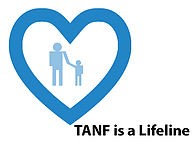Next week marks the 20th anniversary of the passage of the 1996 federal welfare law that created the Temporary Assistance to Needy Families (TANF) program. As the District’s leaders prepare to  make critical choices about how to modify the city’s rigid TANF time limit, they should look to the lessons learned over the past 20 years, particularly research that finds that the share of children living in “deep poverty” has increased as a result of a weaker TANF safety net for families, including time limits that cut families off before they are ready. DC has a choice to avoid pushing more children into “deep poverty” by passing a time limit that focuses on protecting children and recognizes that some families need more time.
make critical choices about how to modify the city’s rigid TANF time limit, they should look to the lessons learned over the past 20 years, particularly research that finds that the share of children living in “deep poverty” has increased as a result of a weaker TANF safety net for families, including time limits that cut families off before they are ready. DC has a choice to avoid pushing more children into “deep poverty” by passing a time limit that focuses on protecting children and recognizes that some families need more time.
Federal law governing TANF grants DC and the states a great deal of flexibility over time limits and other policies, and most states have used this flexibility to create time limit extensions for families who need more time. This is important because a large body of research confirms that families reaching time limits often have substantial problems, including high rates of mental illness and limited cognitive functioning. States that have not created flexible time limits have seen dramatic increases, not only in “deep poverty” – children living below half of the poverty line – but also in hunger, homelessness, and foster care.
The District should look to the experiences in other states as it creates a TANF time limit policy. The DC time limit adopted in 2011 cuts all families off when they reach the time limit, regardless of their circumstances or whether they are actively looking for work. And once DC families reach the time limit, they can never get back on. This is far more restrictive than in most states. Under current law, the time limit will cut more than 10,000 children off from assistance in October 2017, regardless of whether parents are able to meet their children’s basic needs without assistance.
It does not have to be this way. The District can adopt a flexible time limit with a goal that it should help families succeed without pushing any more children into “deep poverty.” That will create a brighter future for our children and for the District as a whole.
